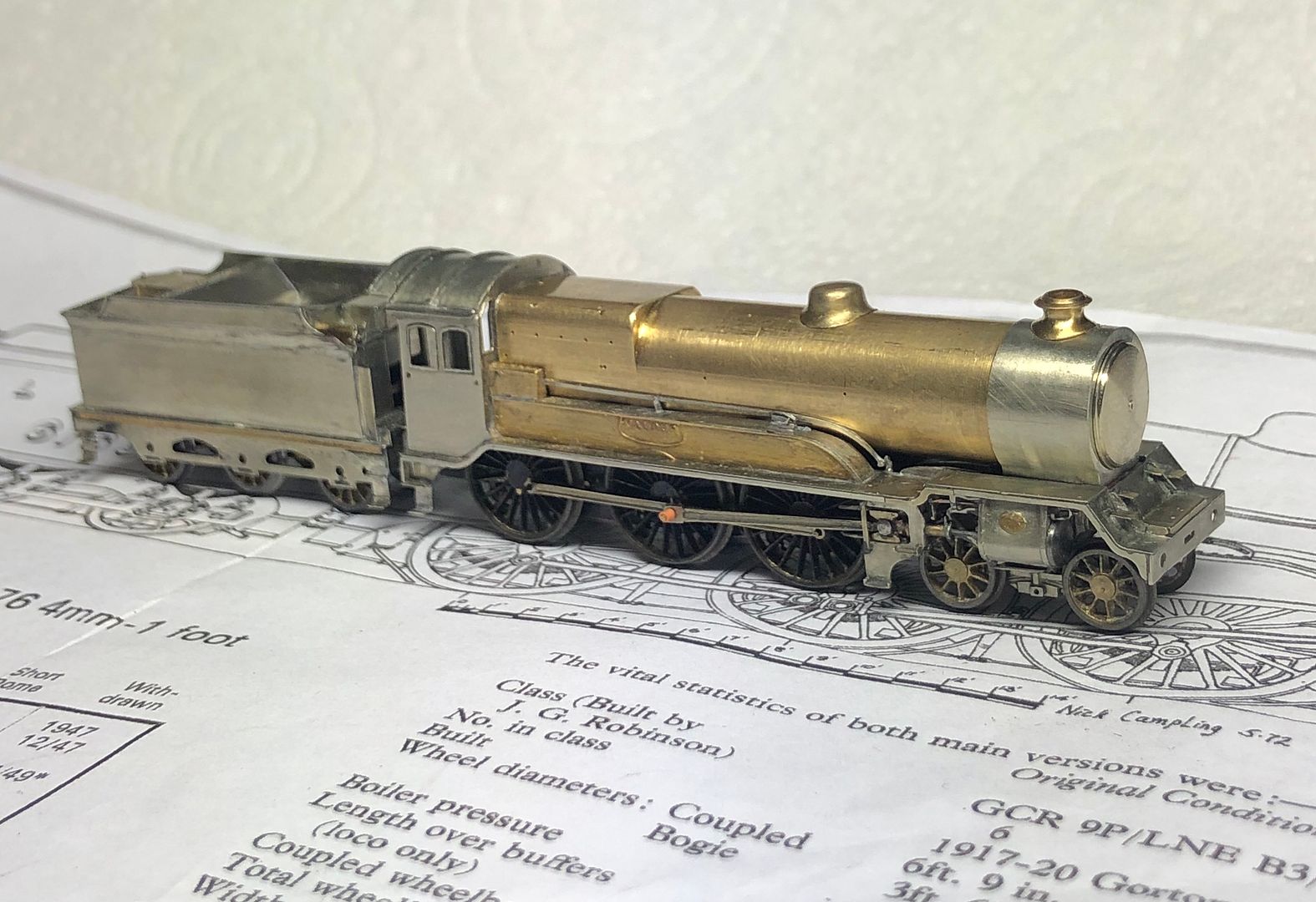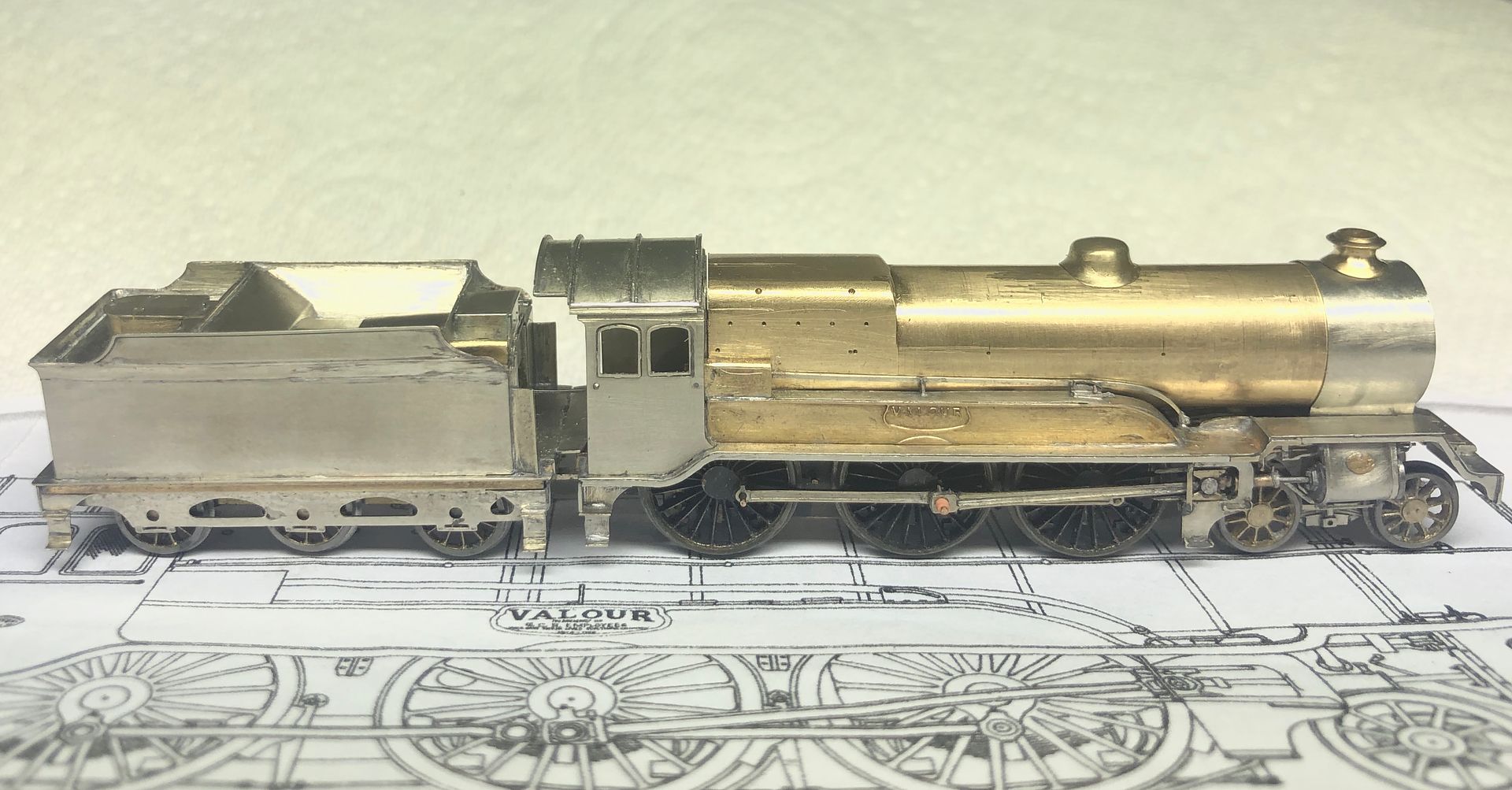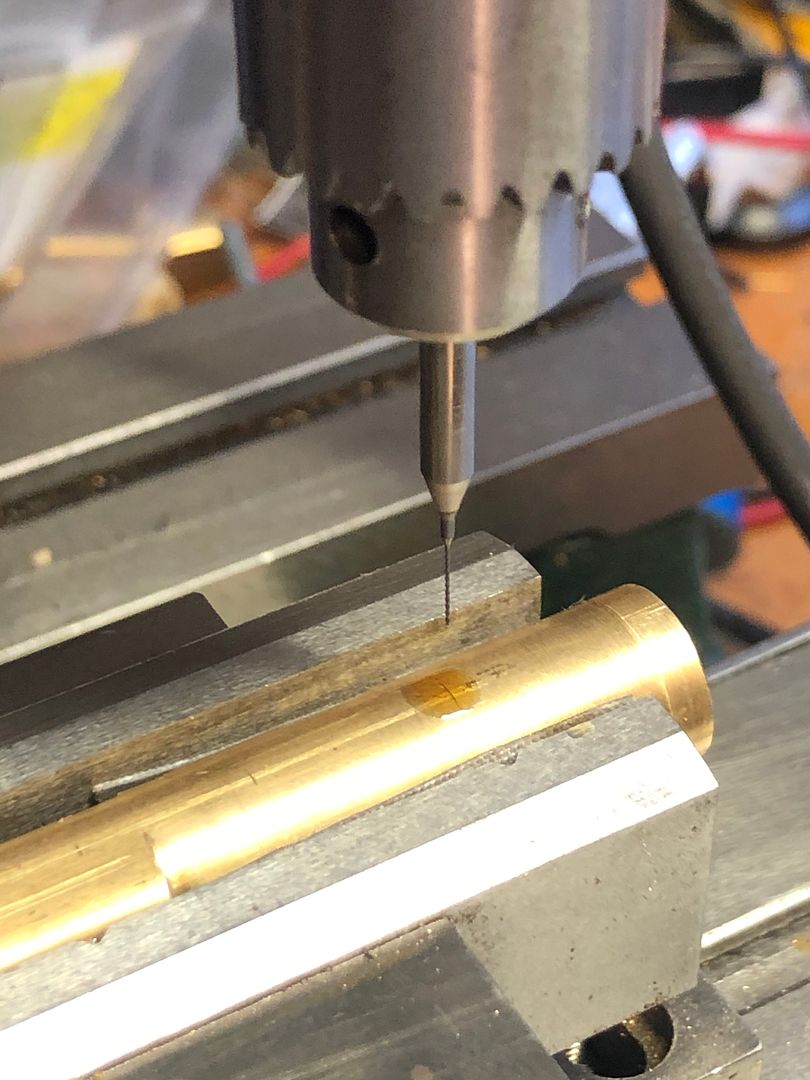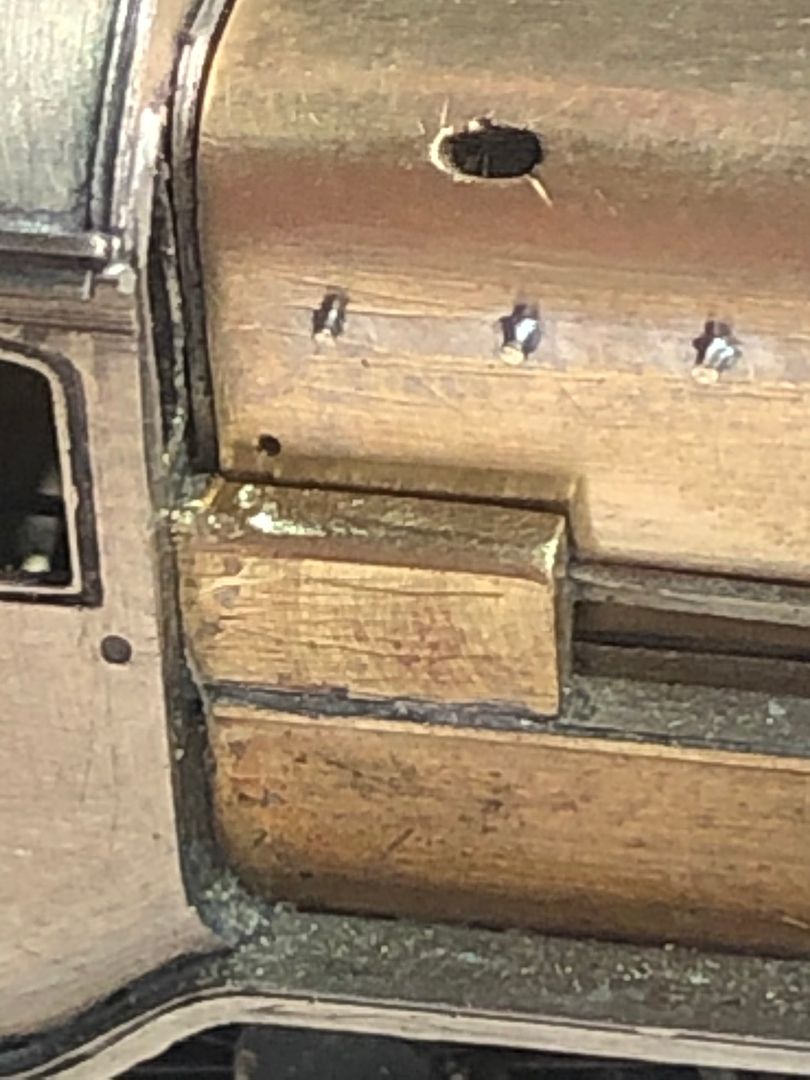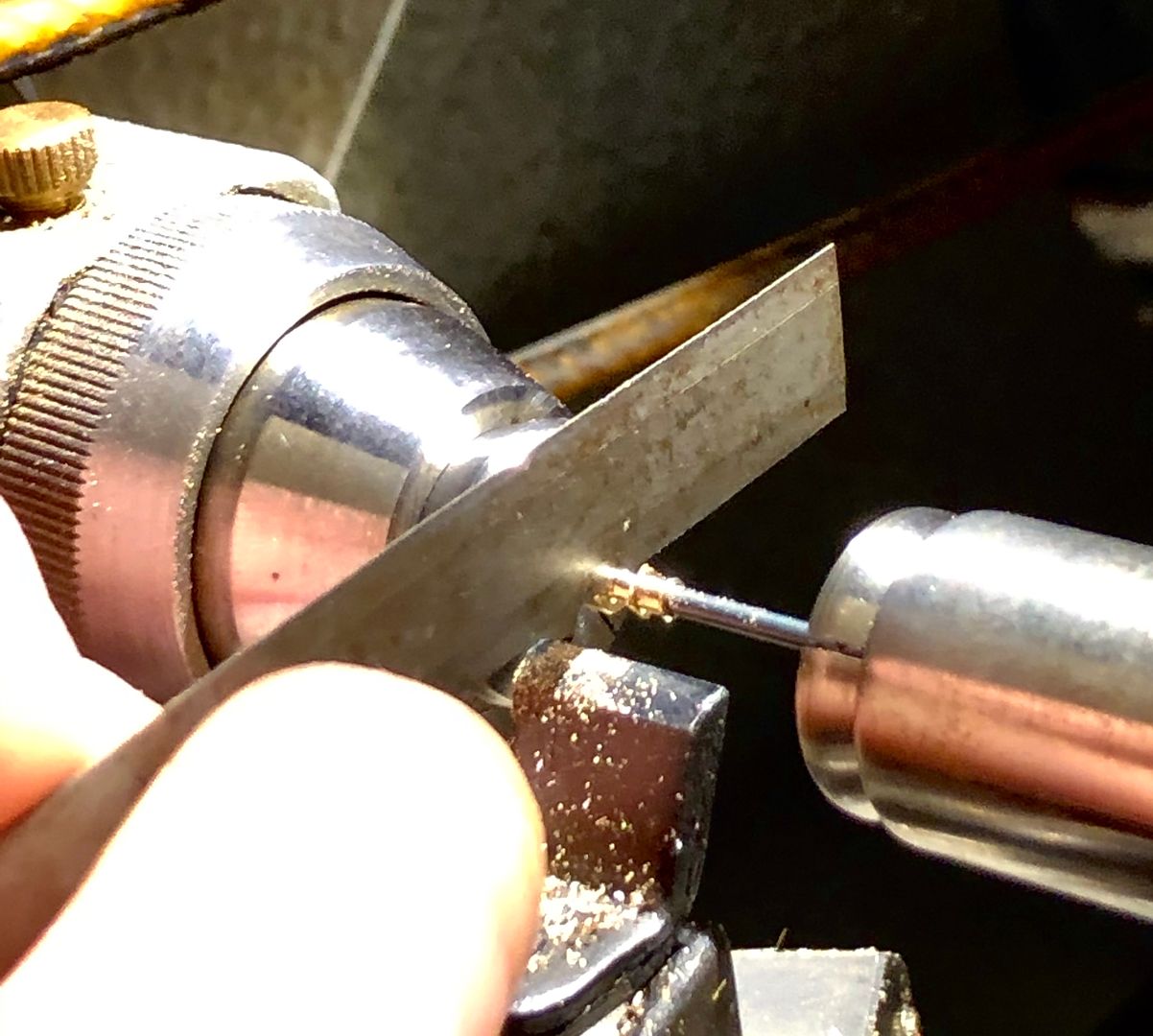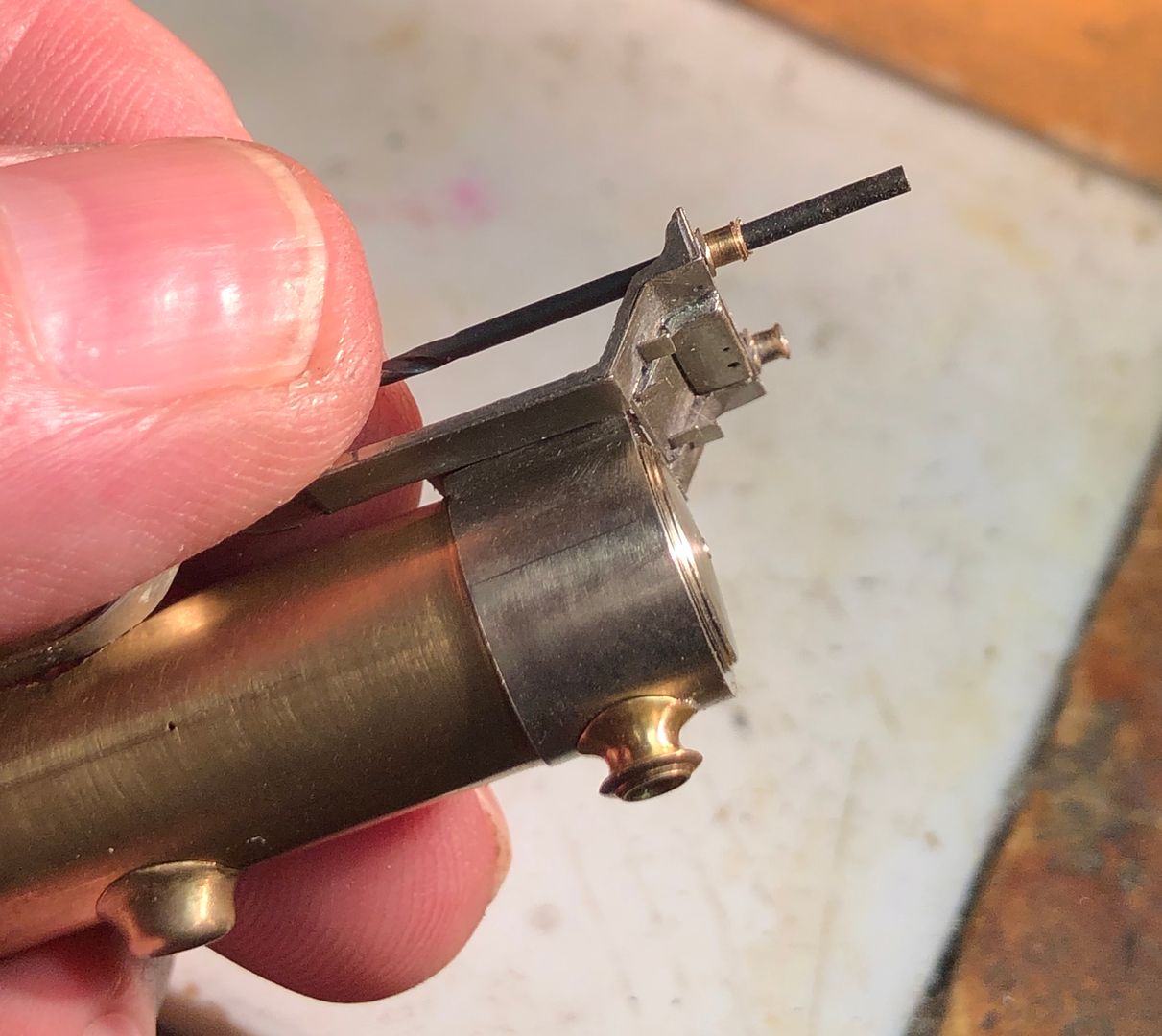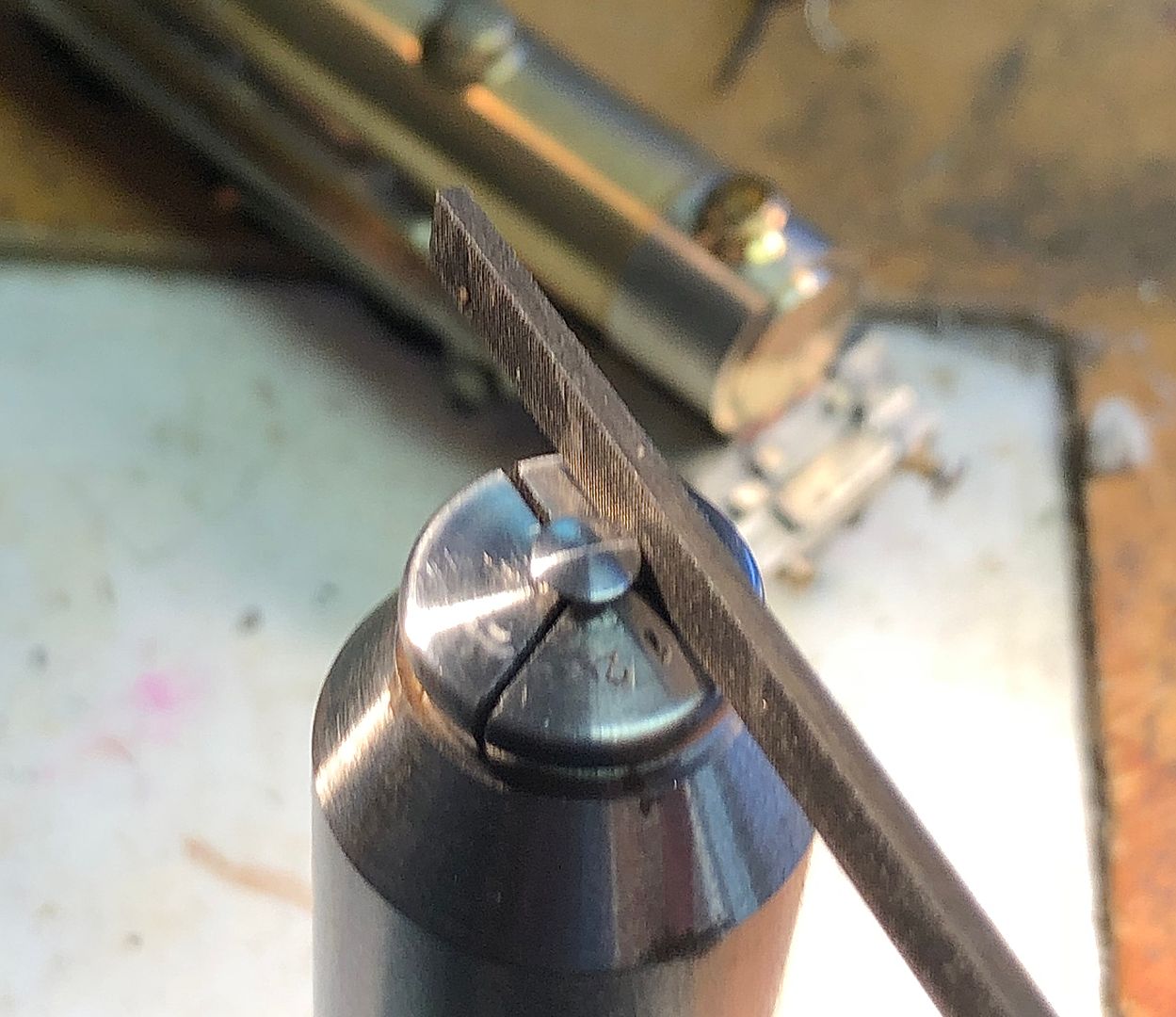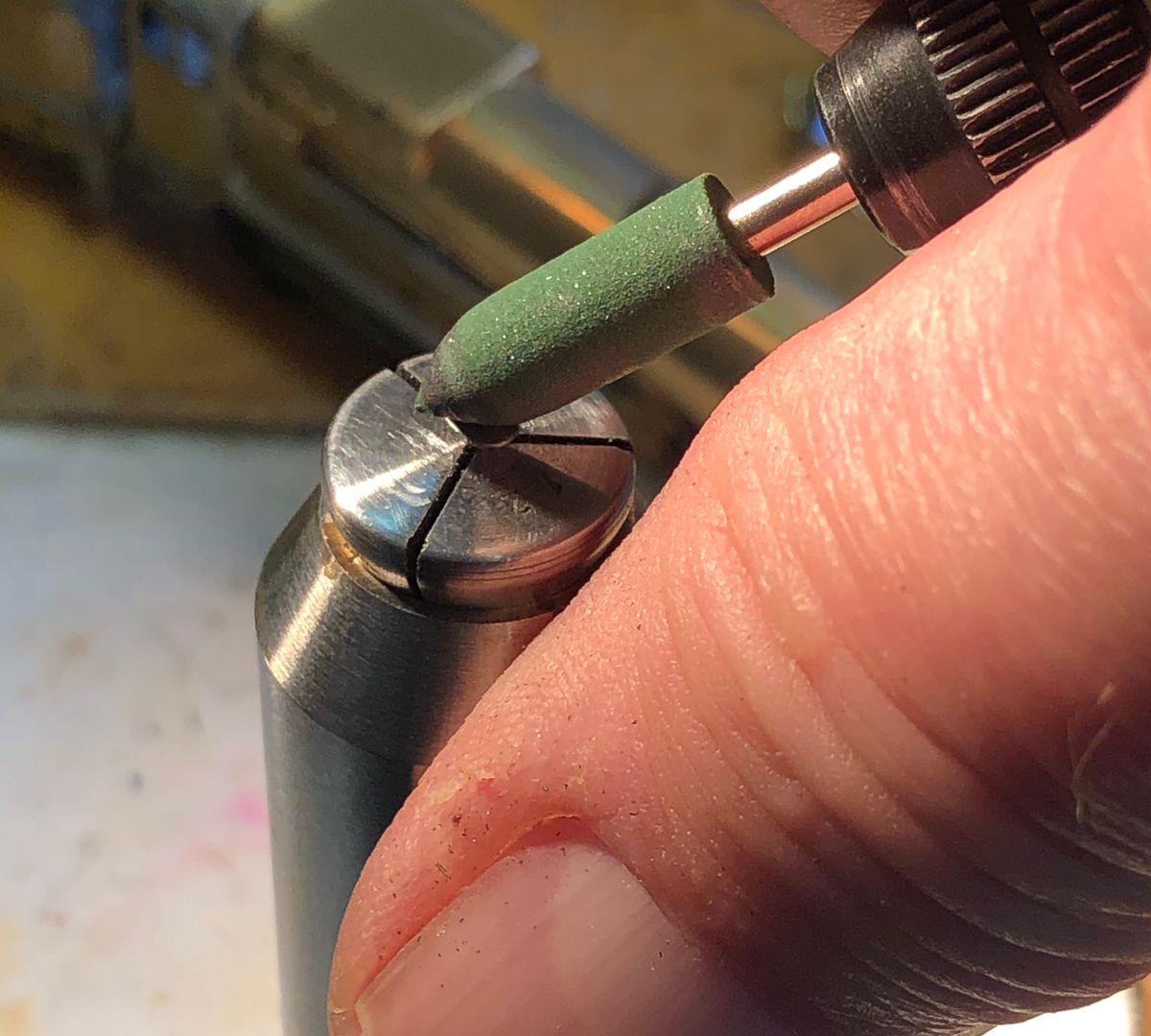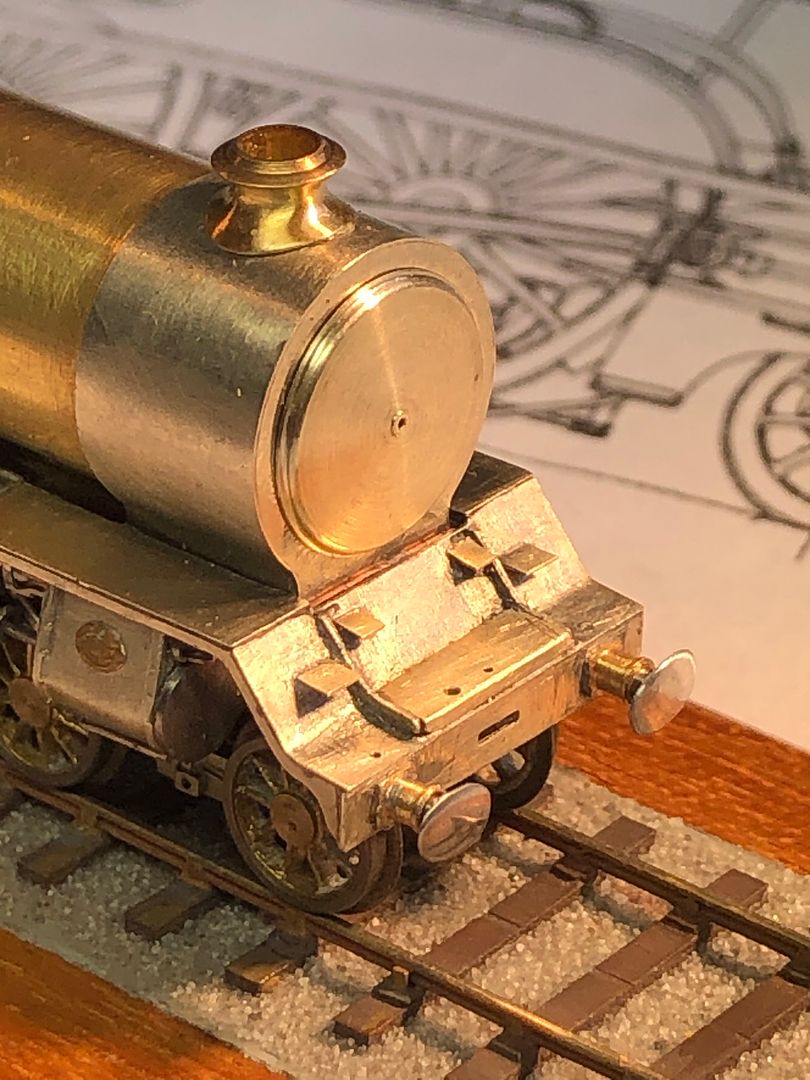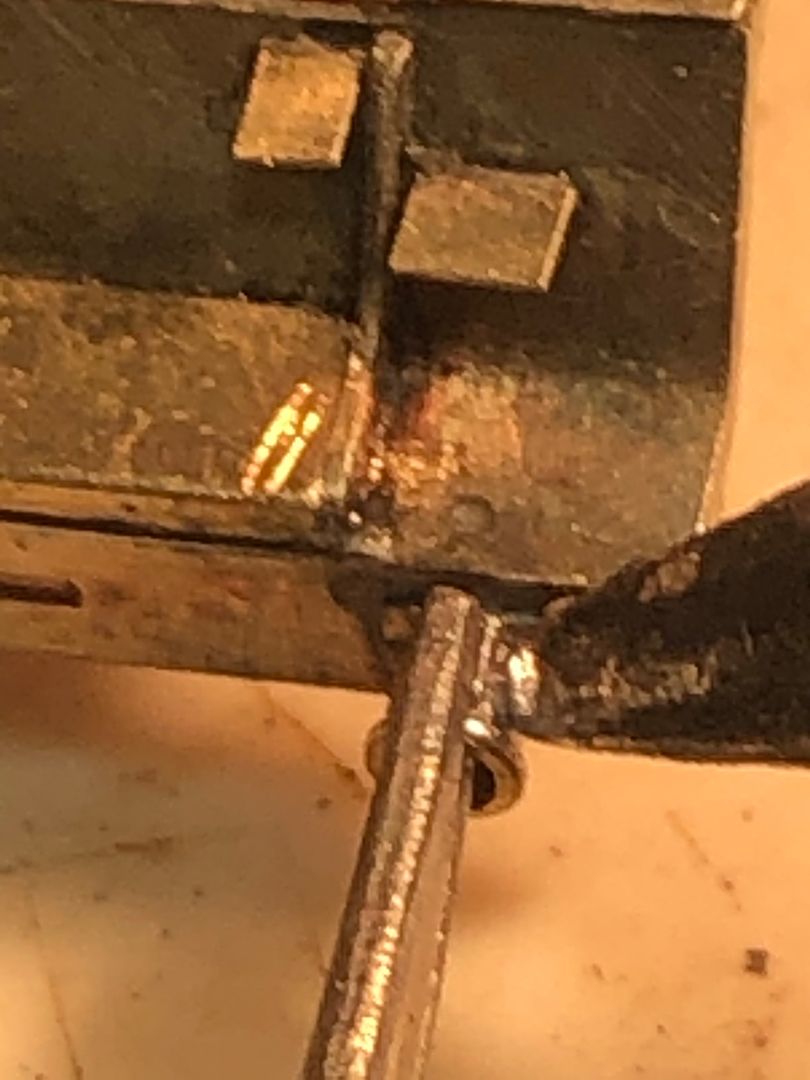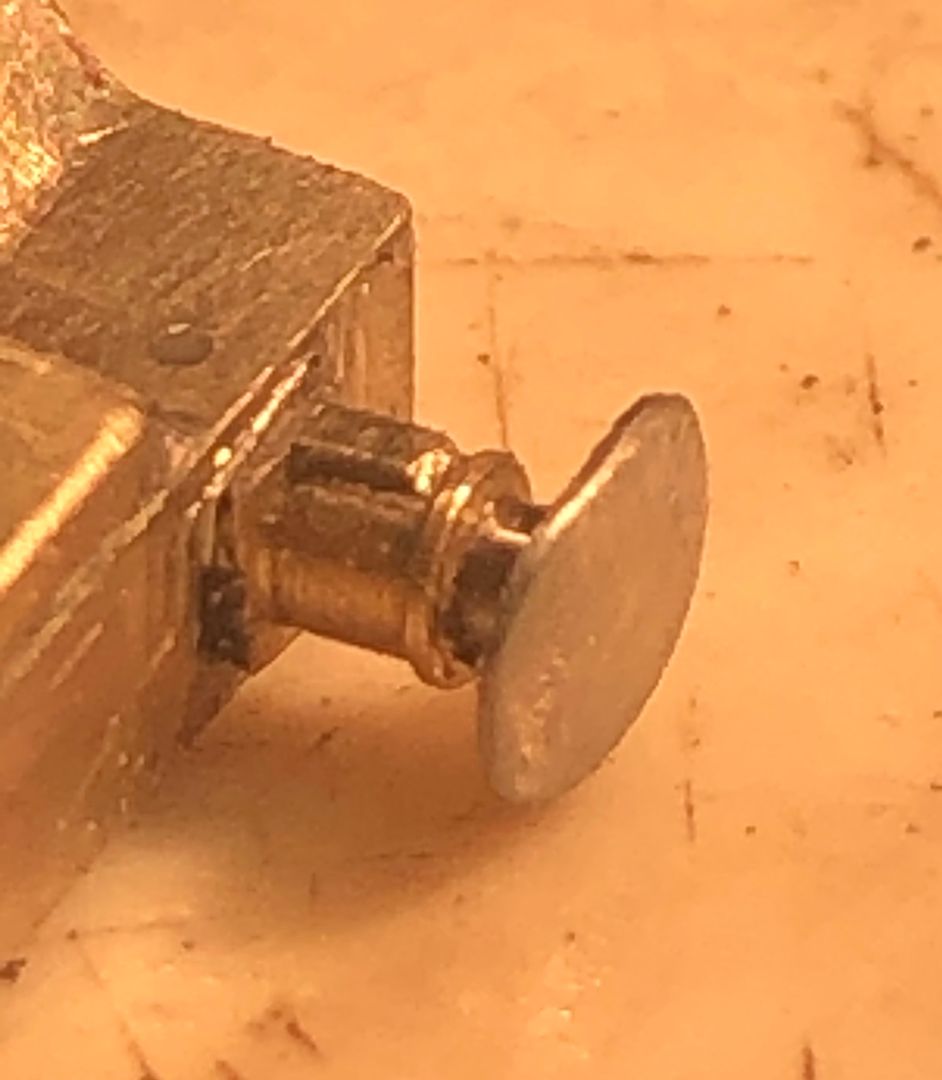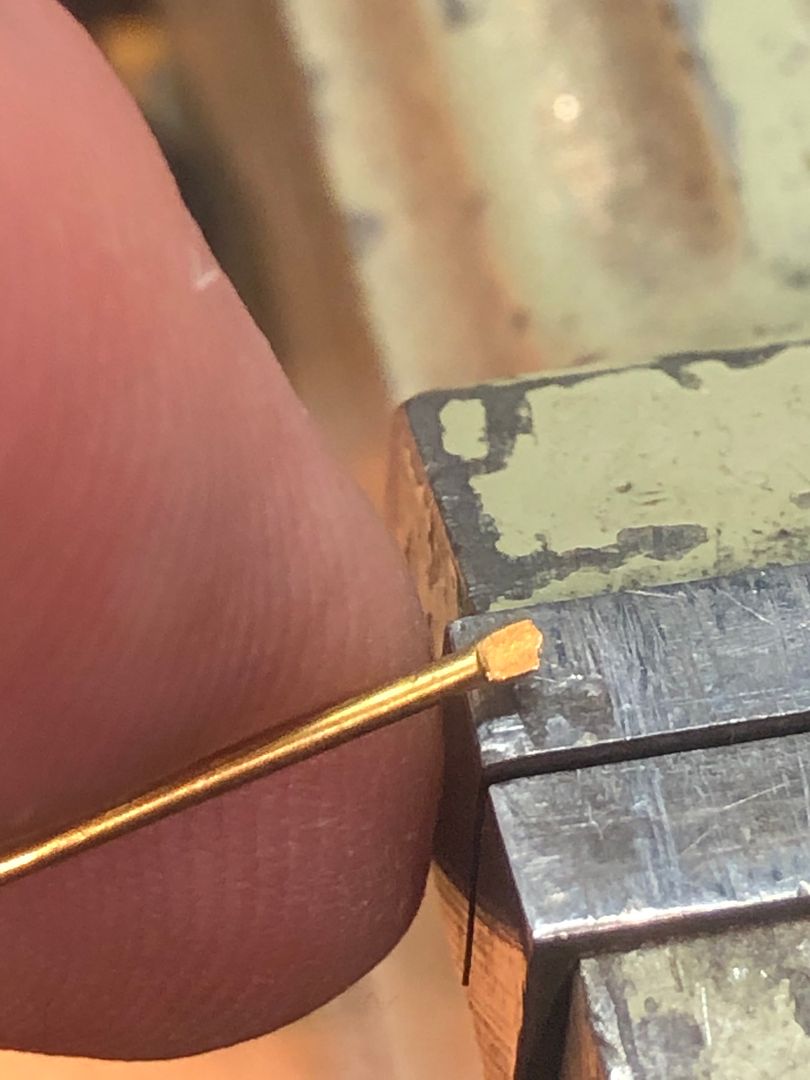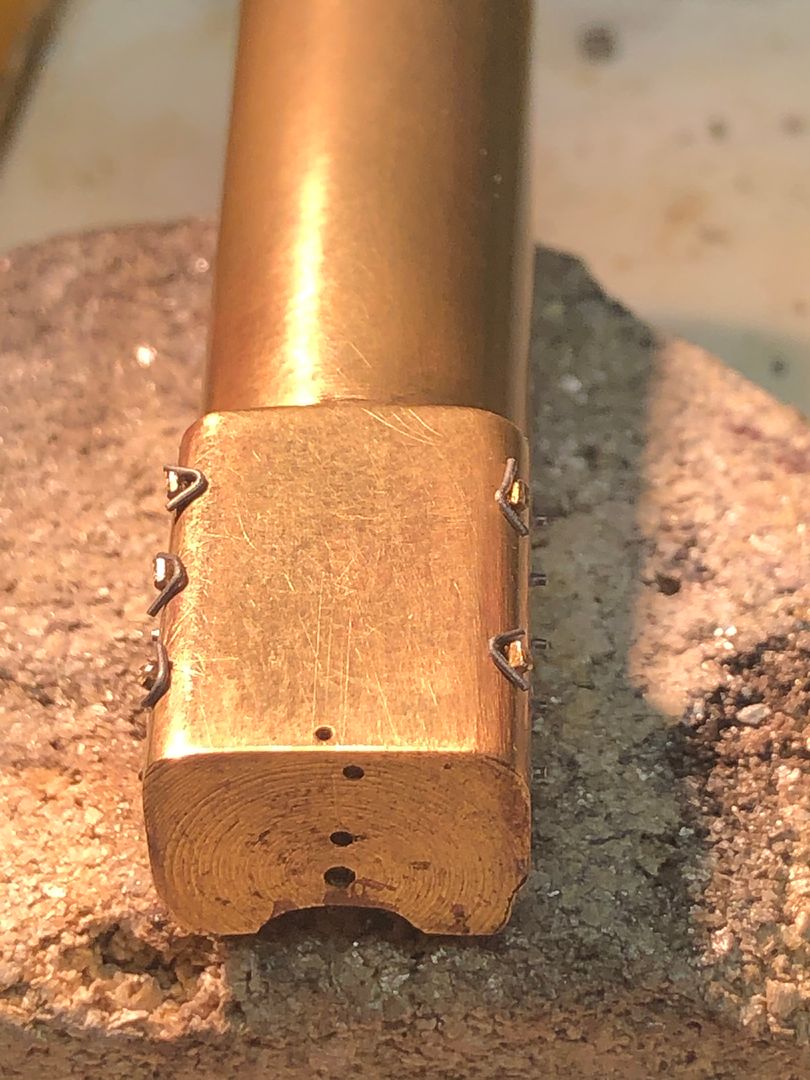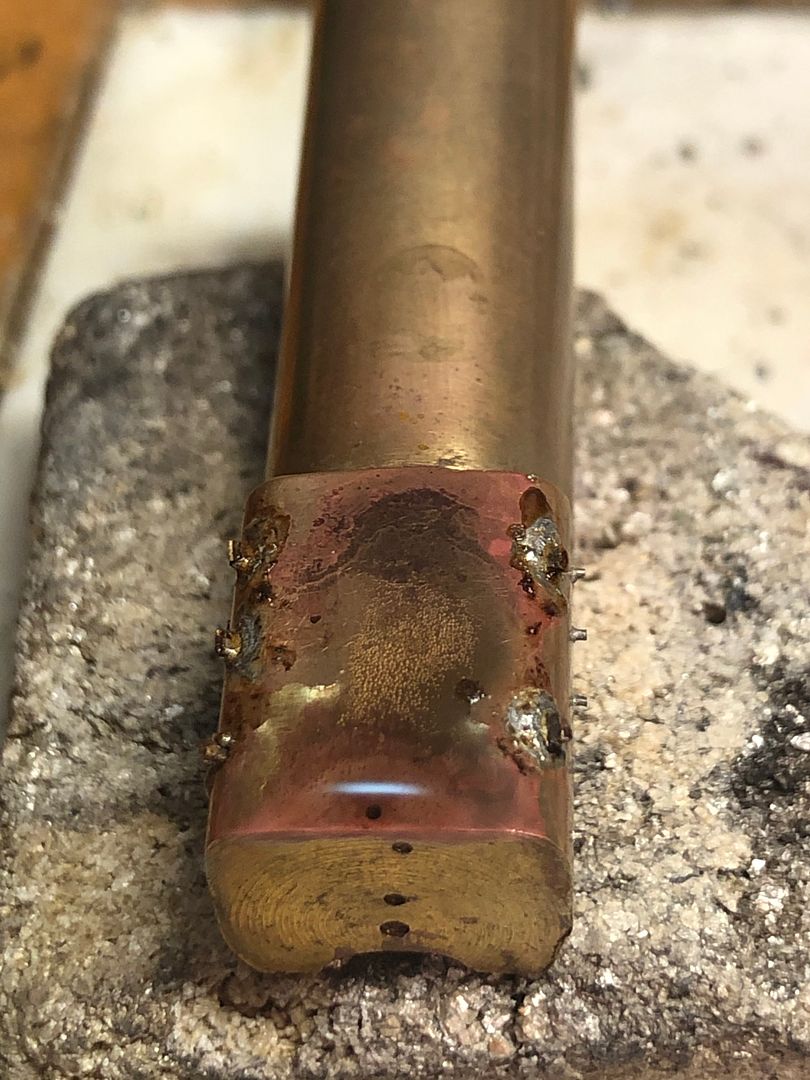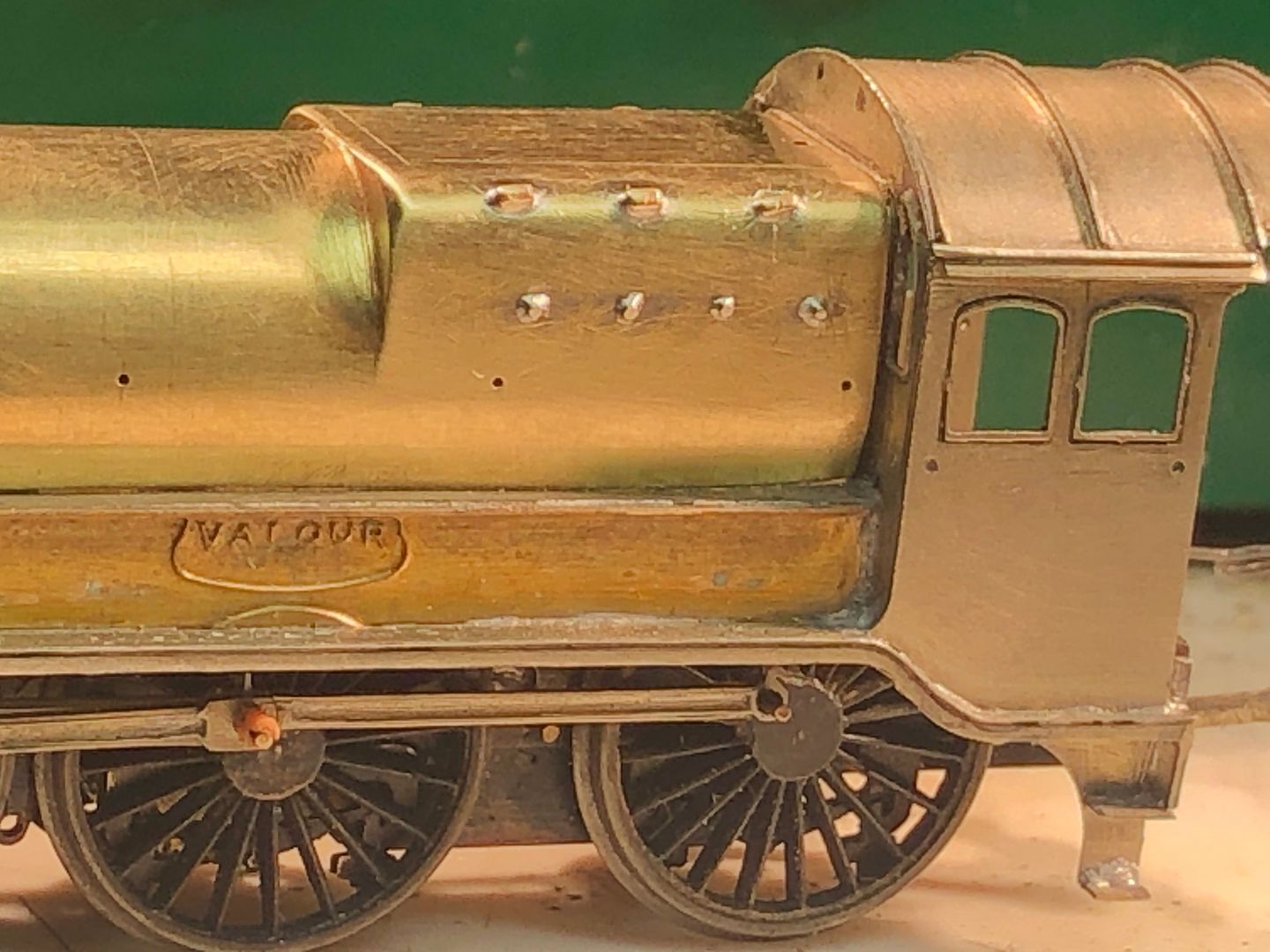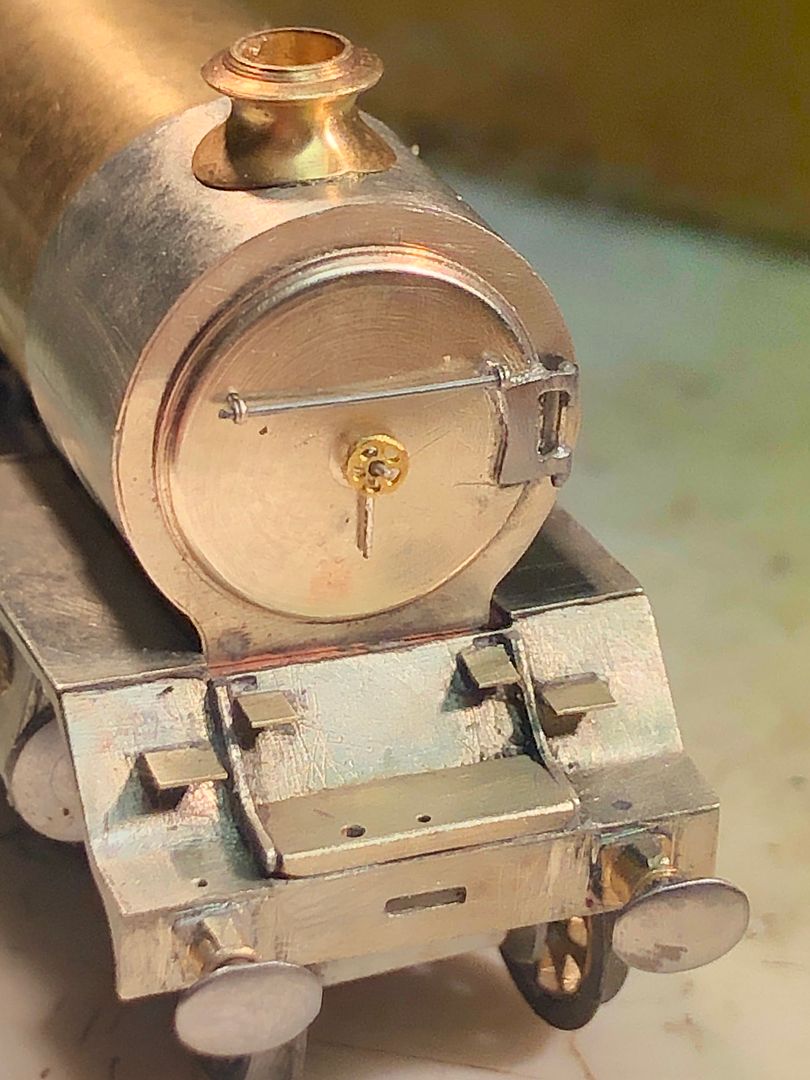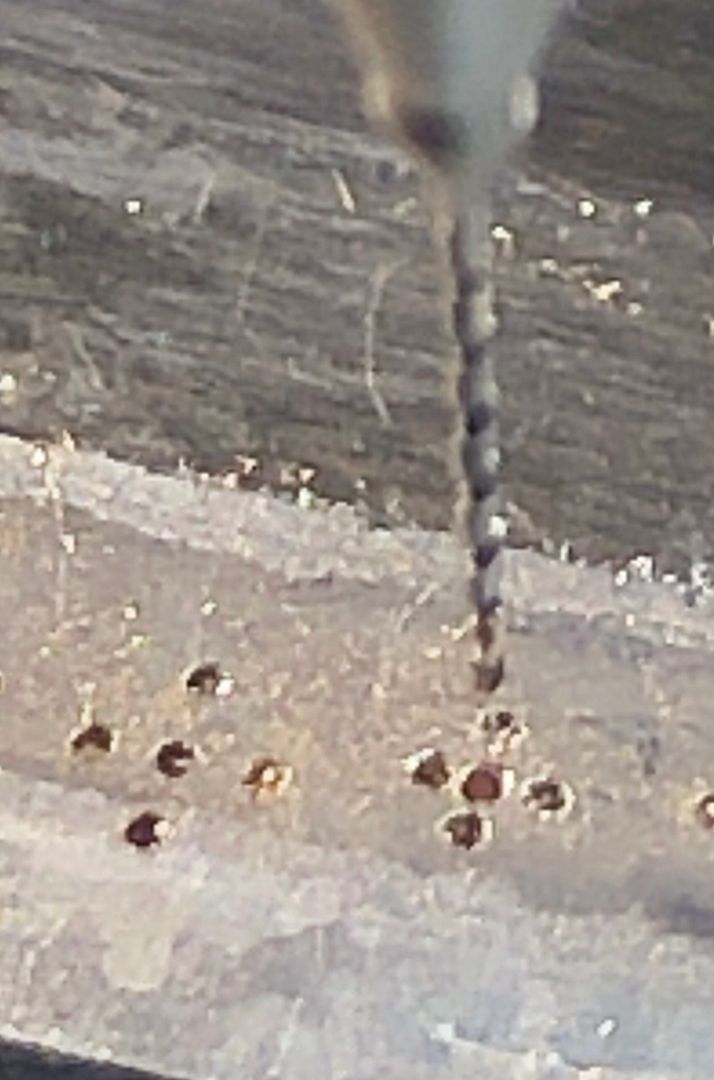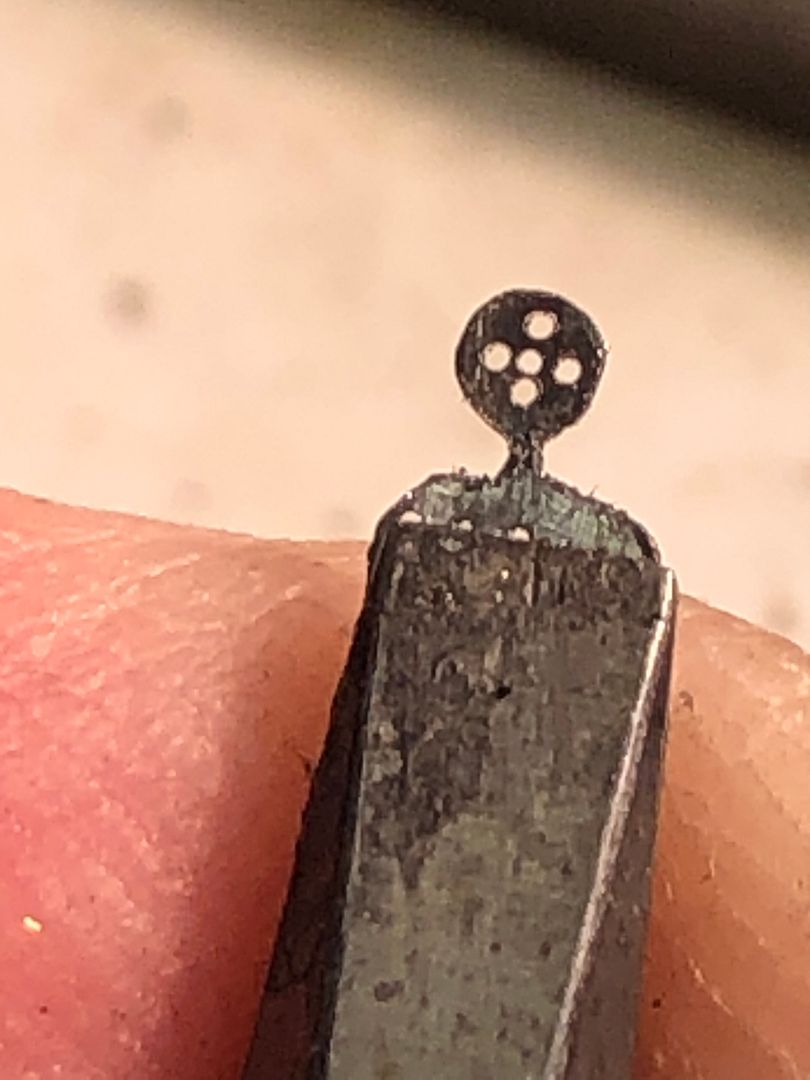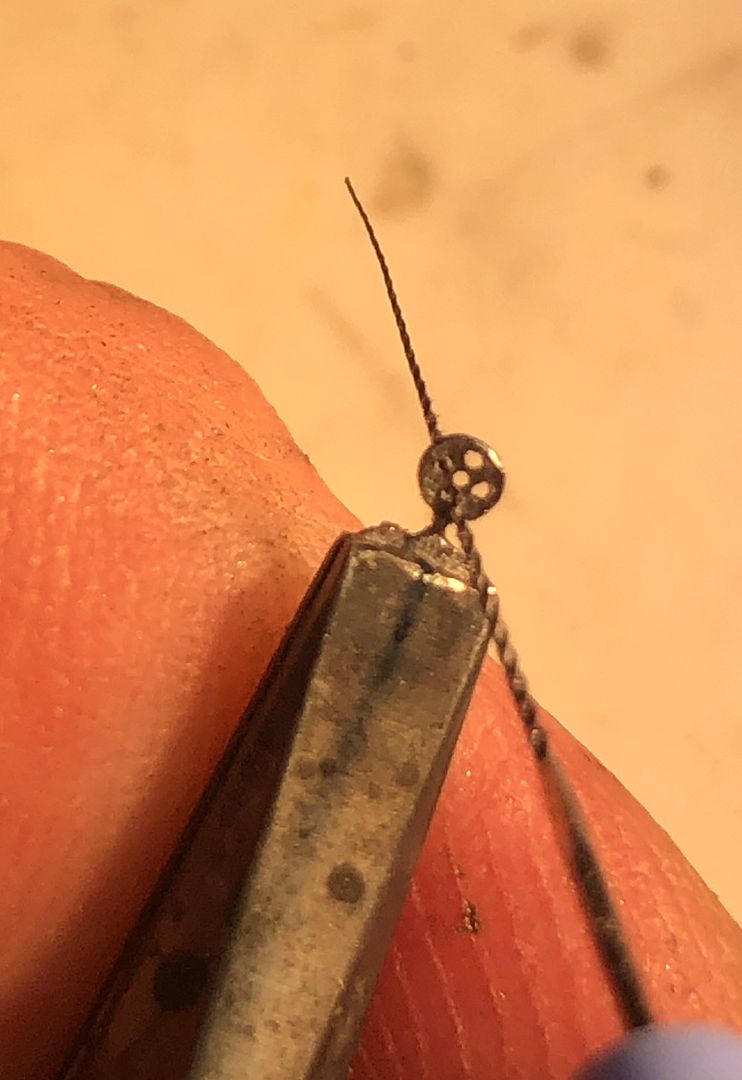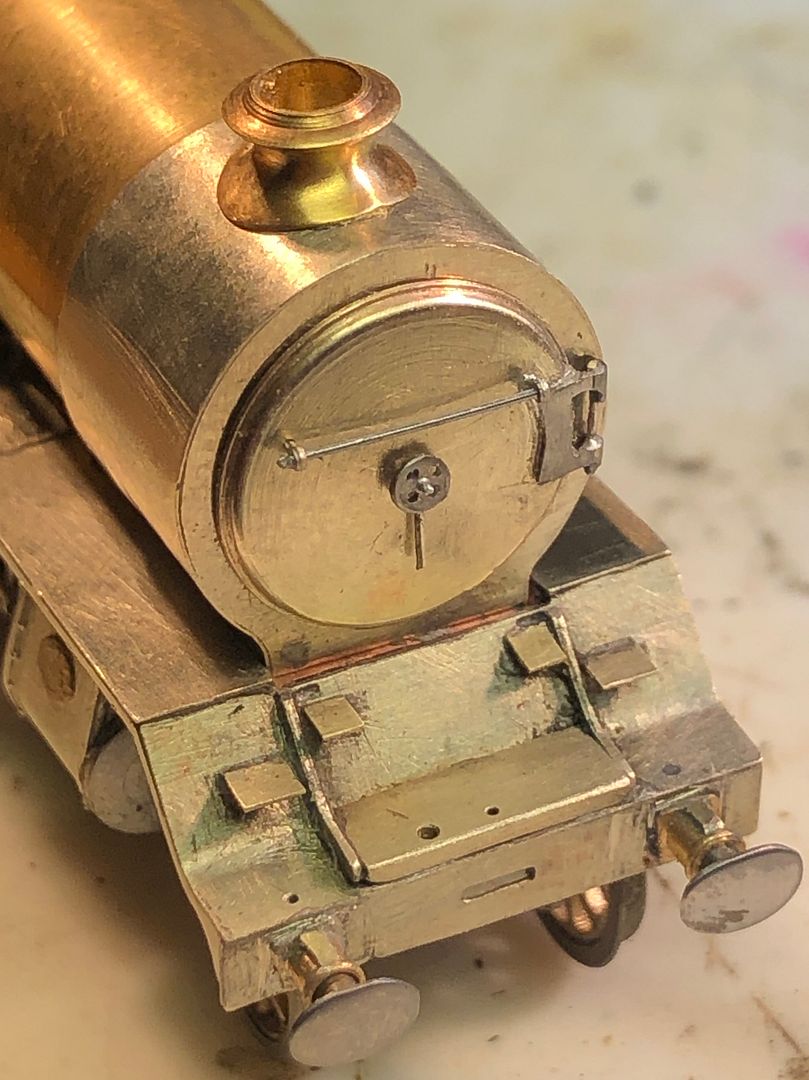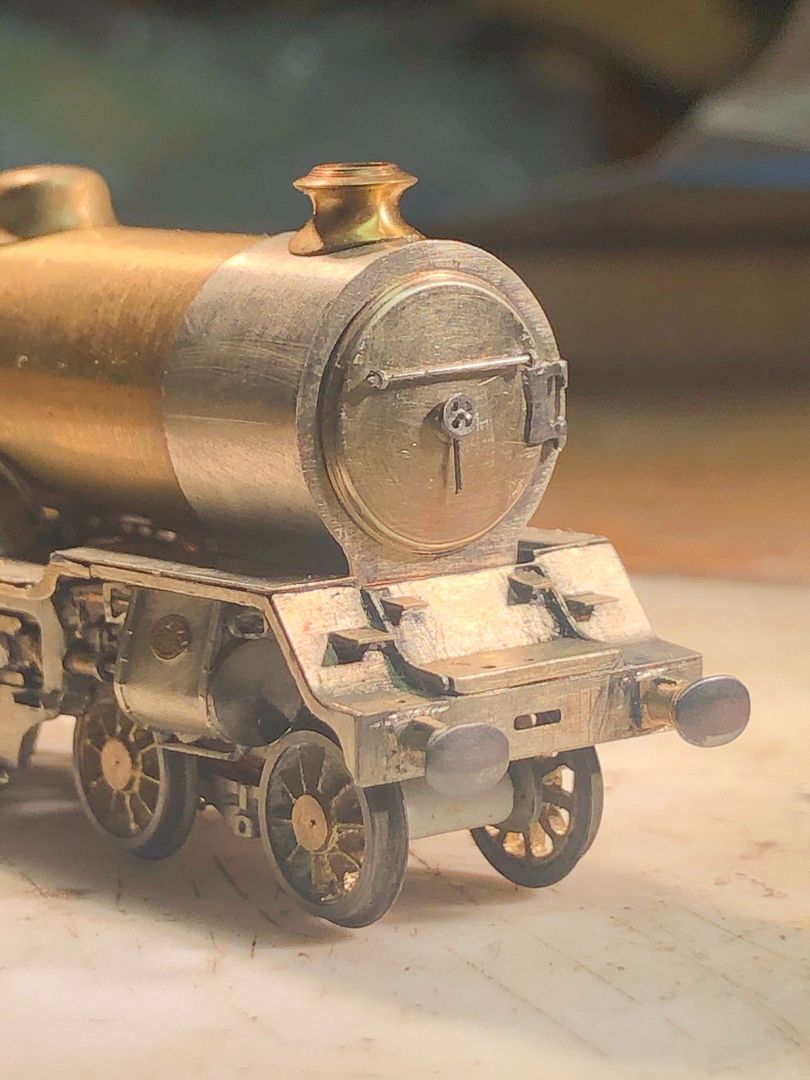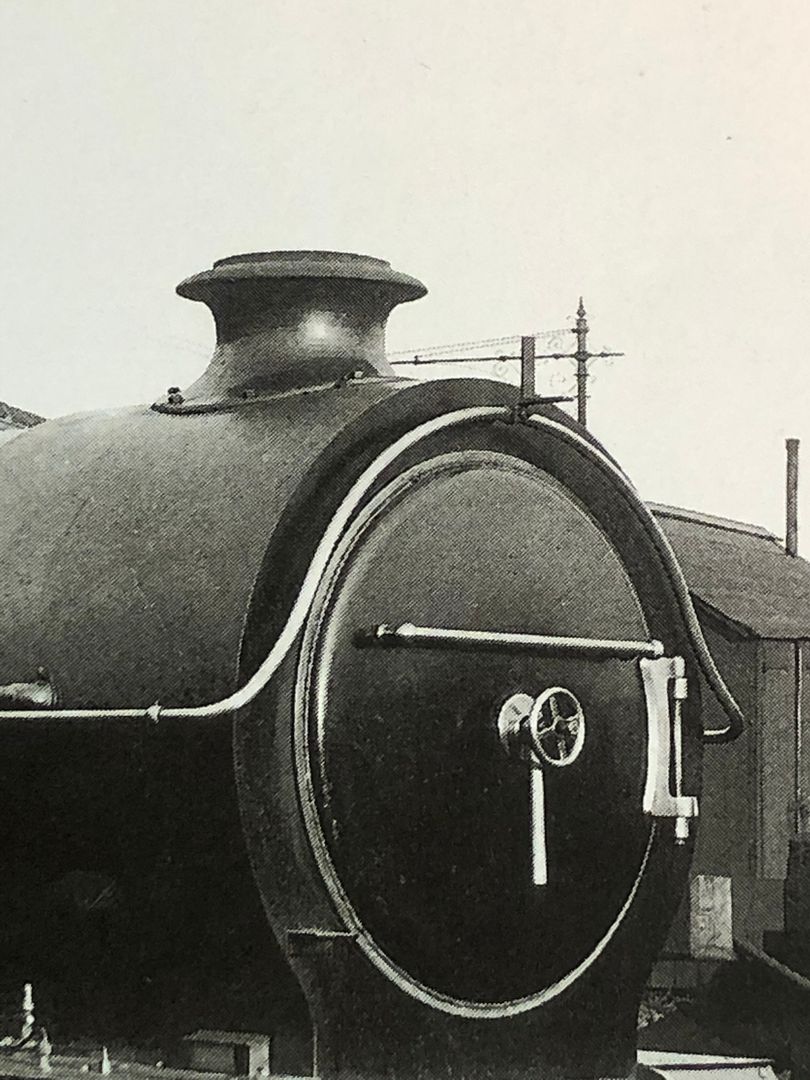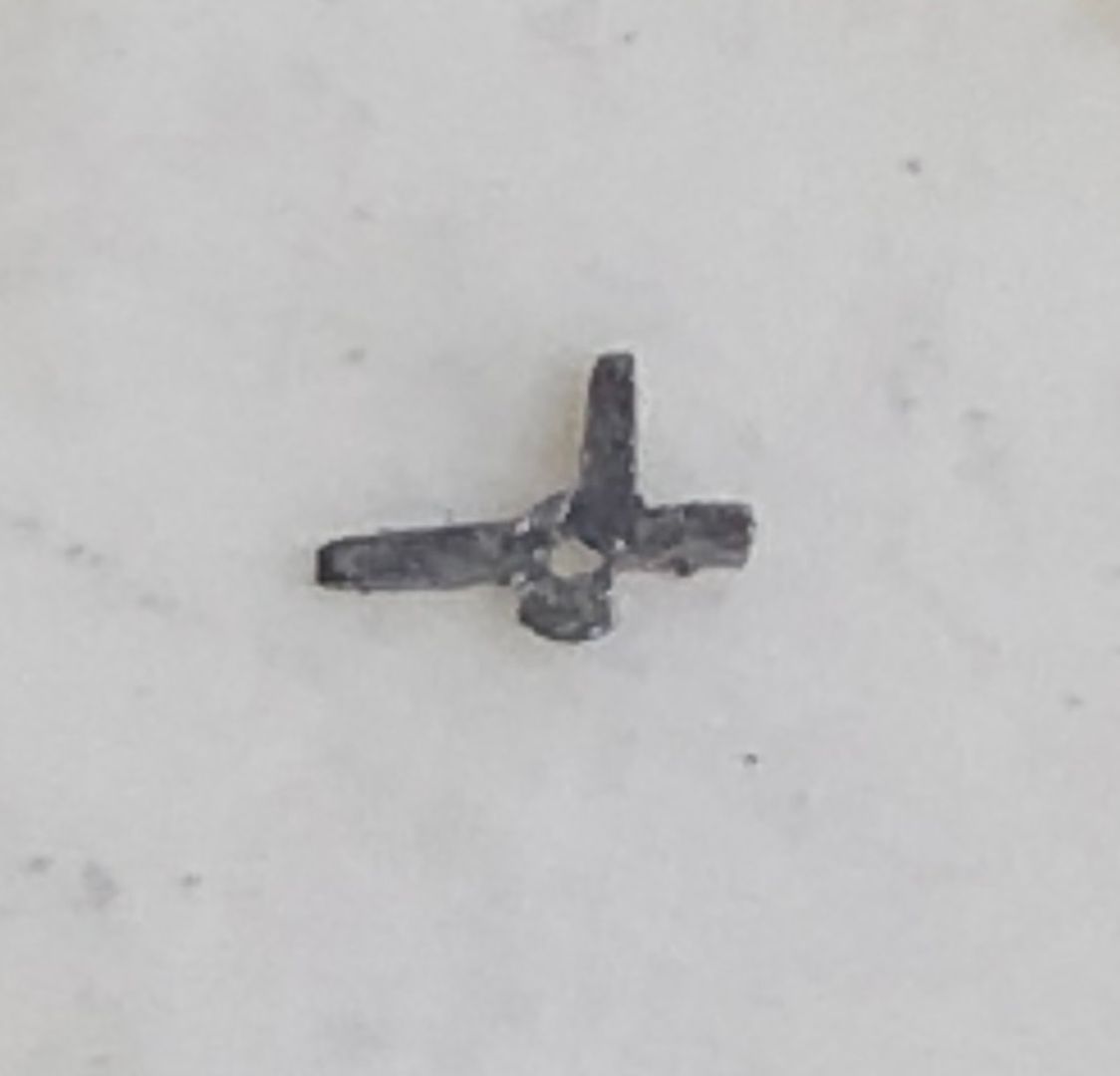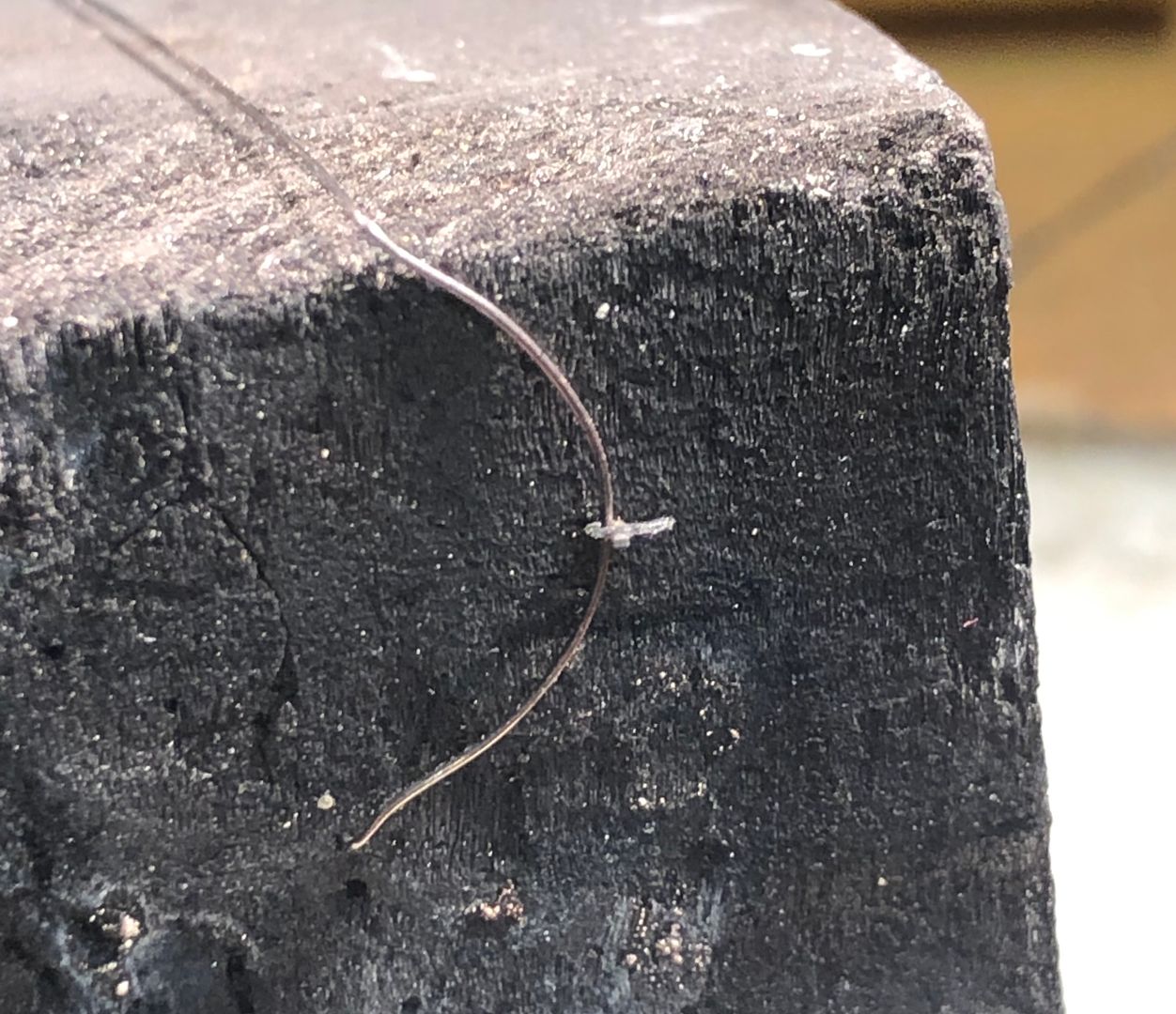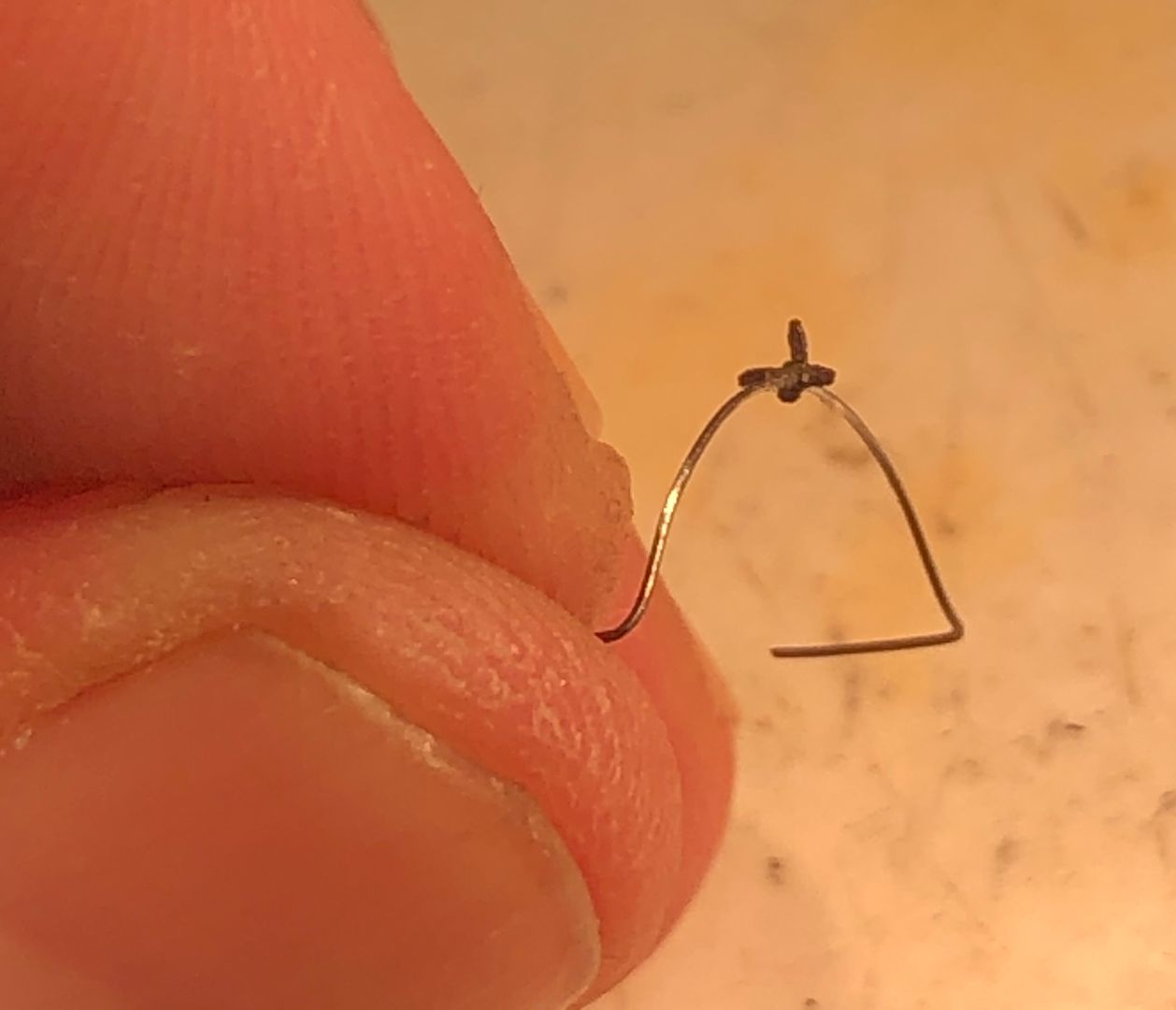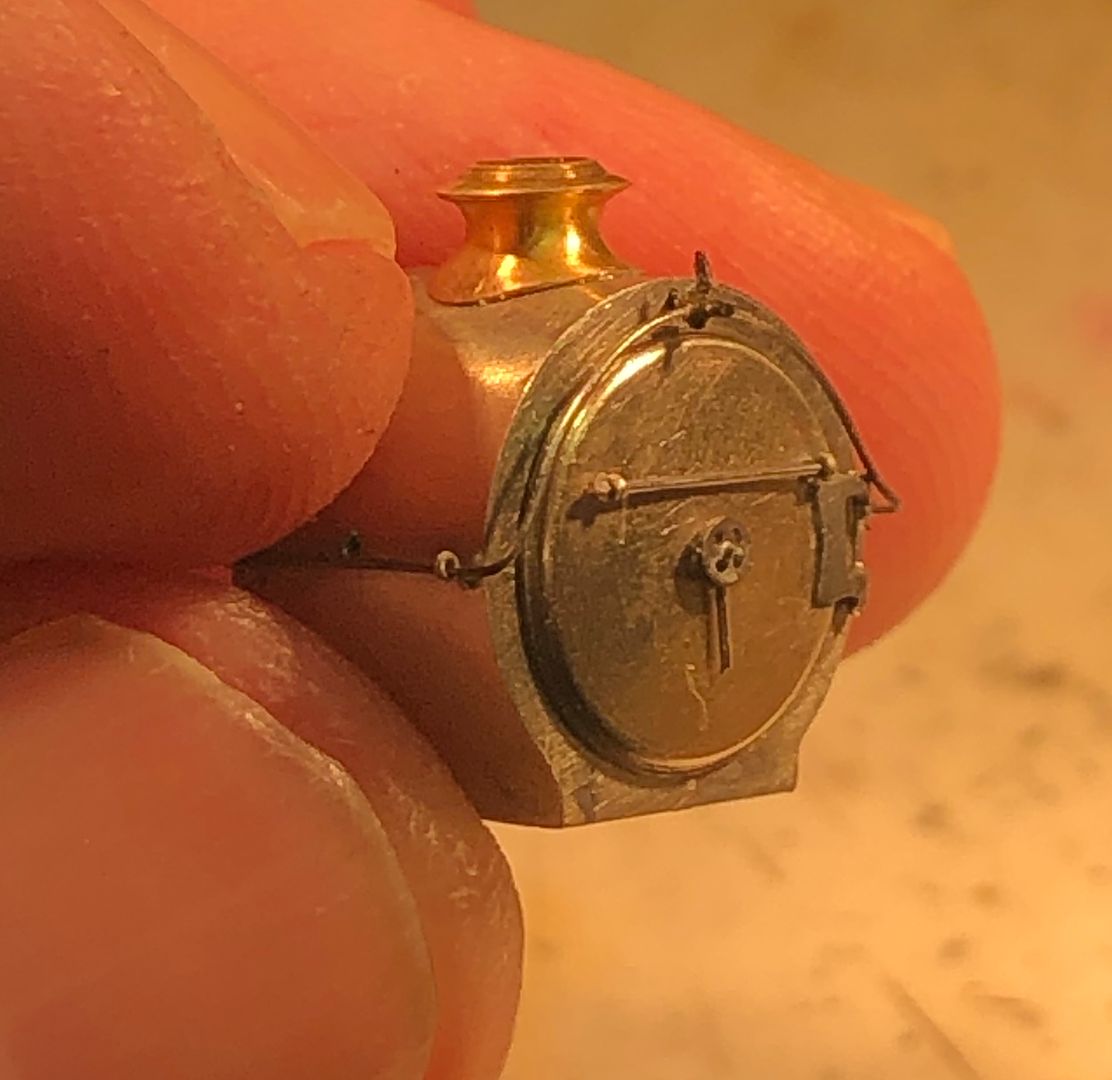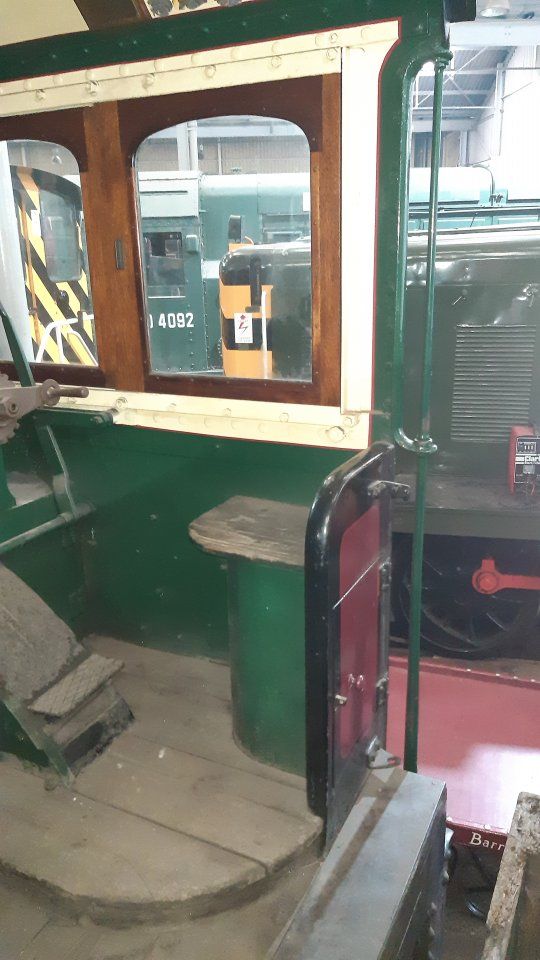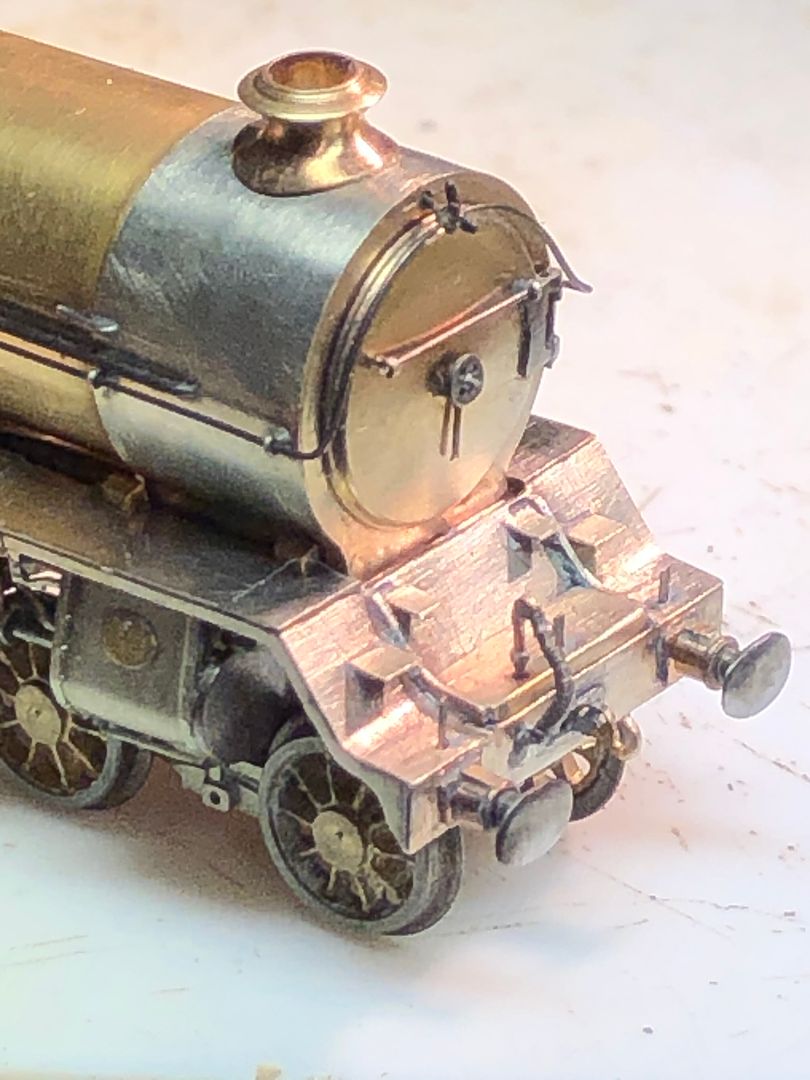Tim Watson
Western Thunderer
The GC water scoop tenders had a cute little ships wheel to help raise & lower the scoop. This tender etch doesn’t have any included, but I was fortunately given one from a Michael Edge etch for a standard tender.
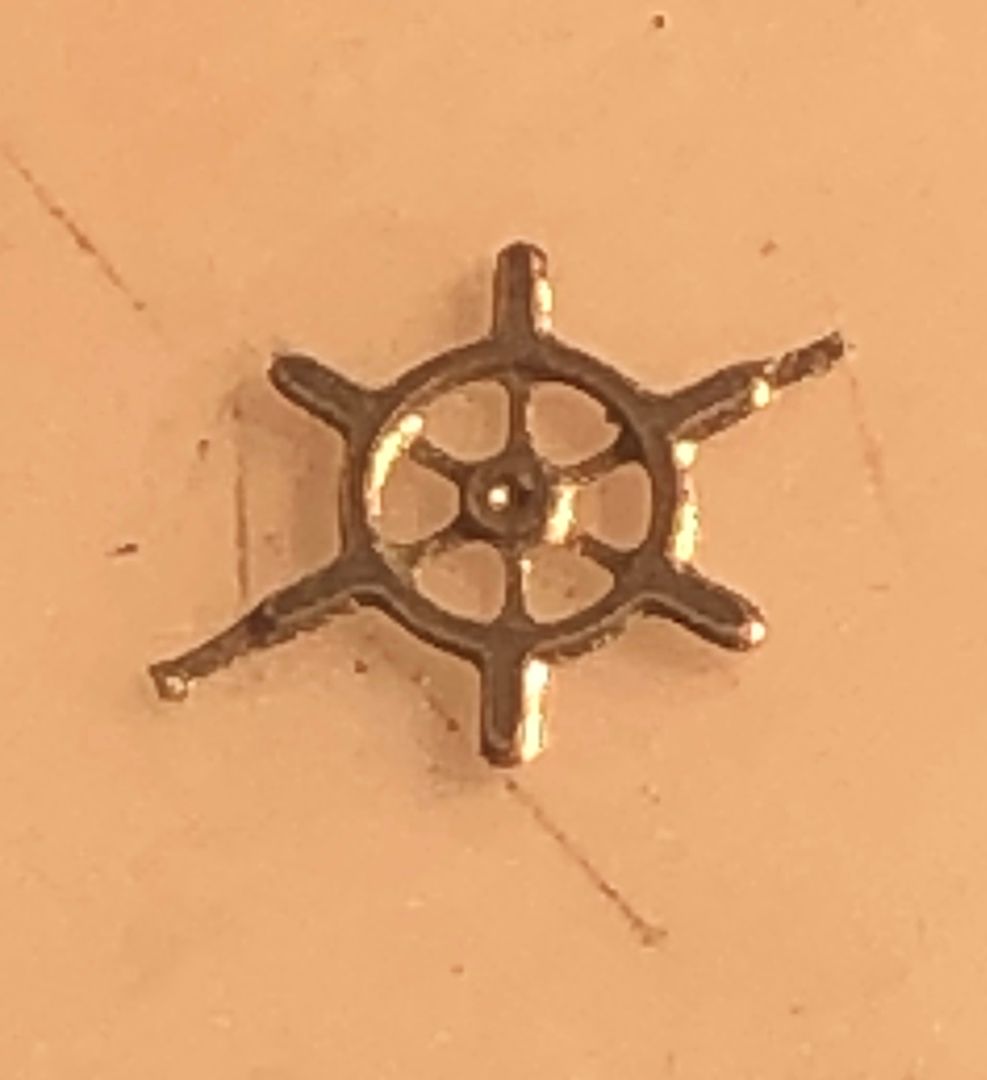
It’s a beautiful little etch, but there is no hole in the middle. Drilling this out free hand would have ended up with S shaped spokes or the carpet monster claiming another object, so I soldered it to a piece of brass to support it whilst drilling the 0.3 mm diameter hole.
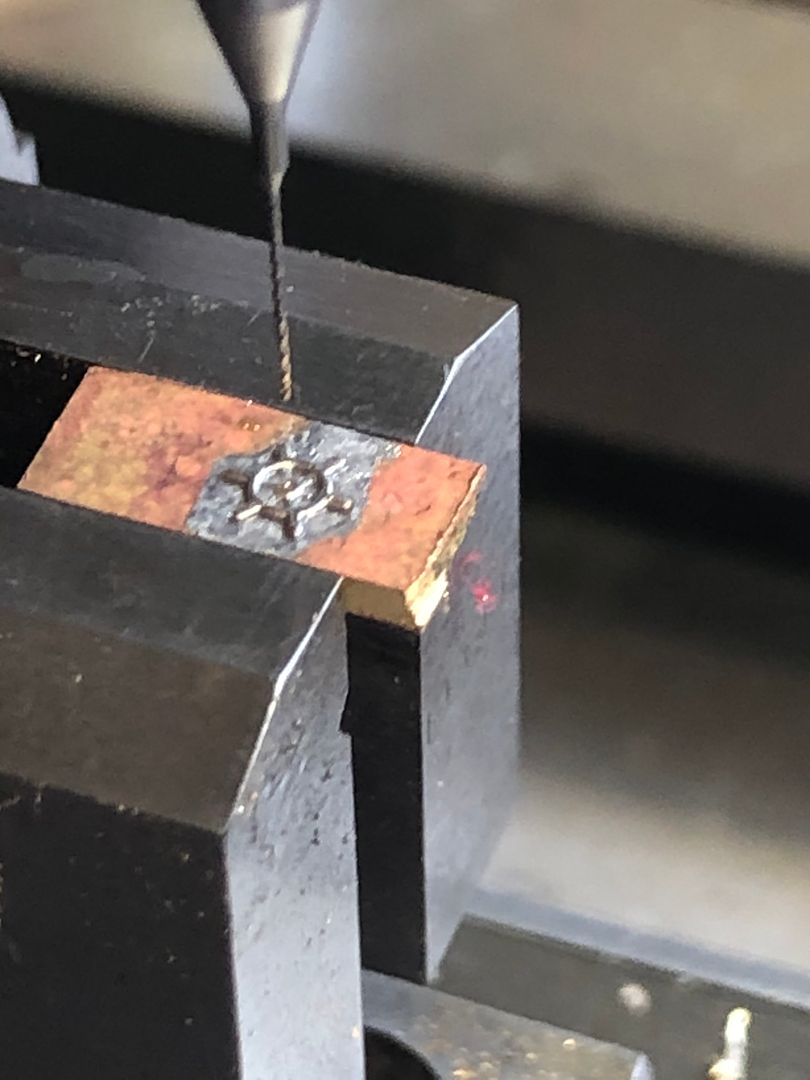
In order to give it sufficient strength I think it needs the rod to go through the housing which was made from a piece of brass, again drilled 0.3mm and soldered on to the tender top.
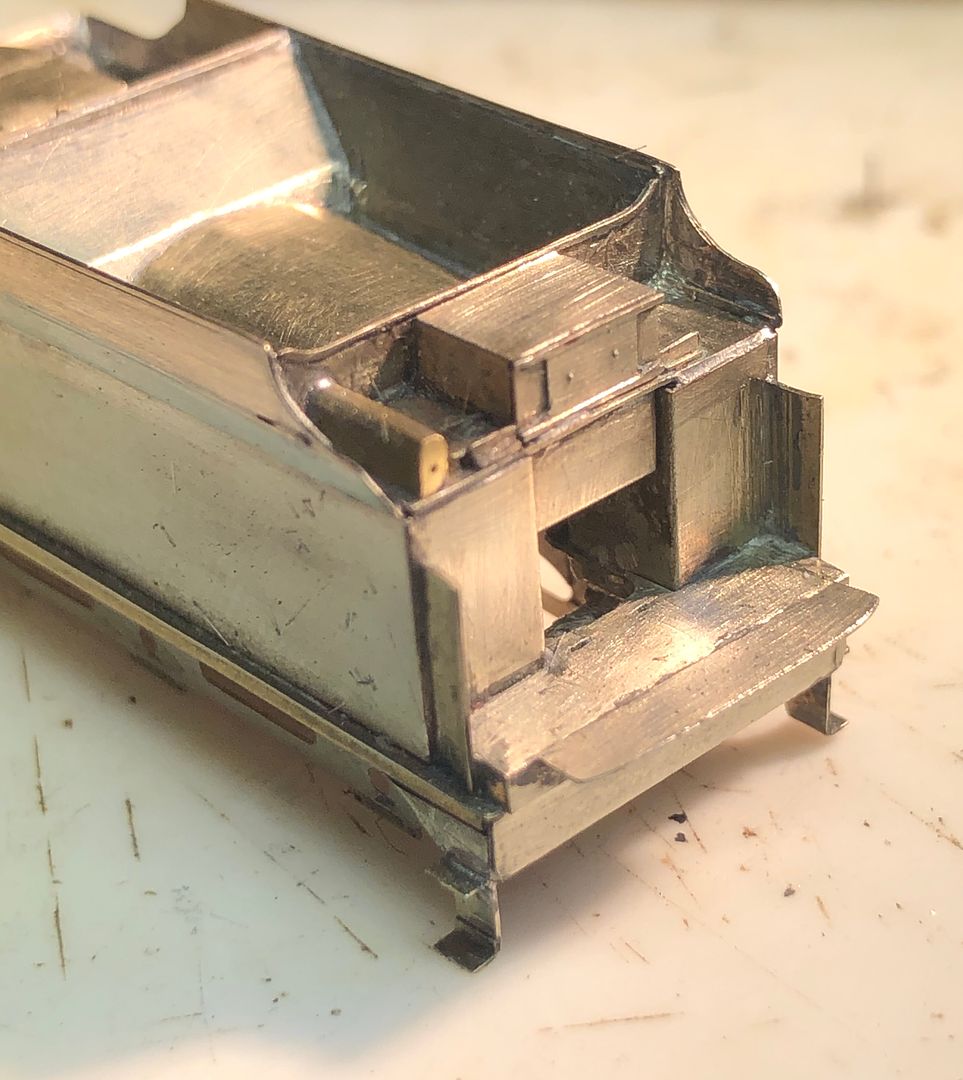
The wheel will be removable for the time being, whilst the engine and tender are being handled extensively during construction.
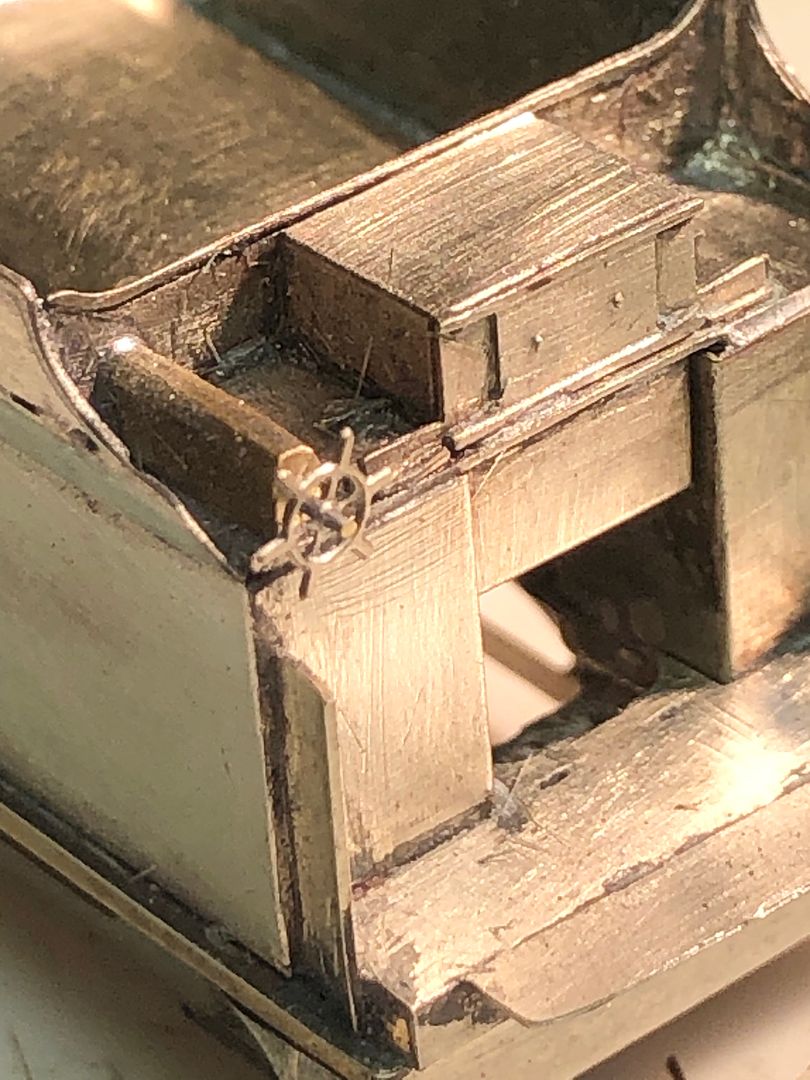
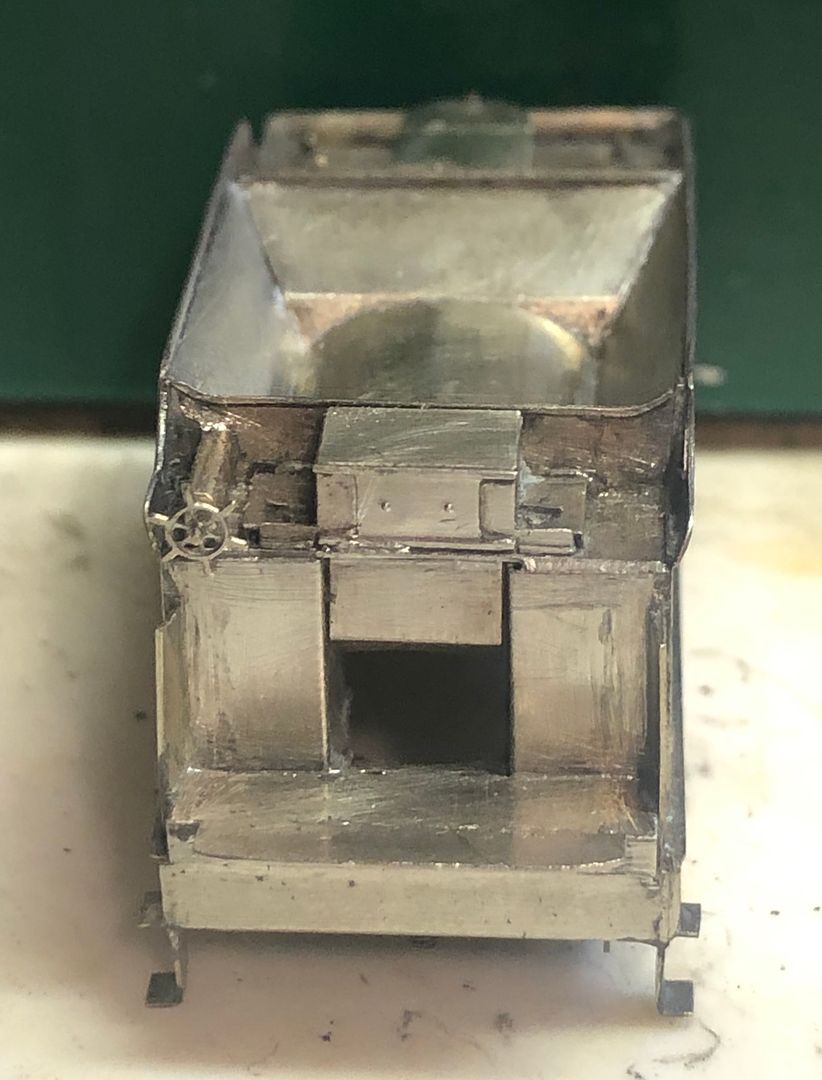
Tim

It’s a beautiful little etch, but there is no hole in the middle. Drilling this out free hand would have ended up with S shaped spokes or the carpet monster claiming another object, so I soldered it to a piece of brass to support it whilst drilling the 0.3 mm diameter hole.

In order to give it sufficient strength I think it needs the rod to go through the housing which was made from a piece of brass, again drilled 0.3mm and soldered on to the tender top.

The wheel will be removable for the time being, whilst the engine and tender are being handled extensively during construction.


Tim
Last edited:

